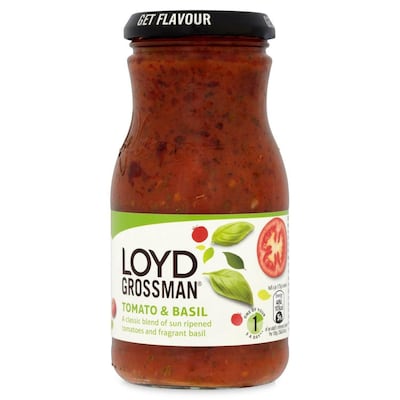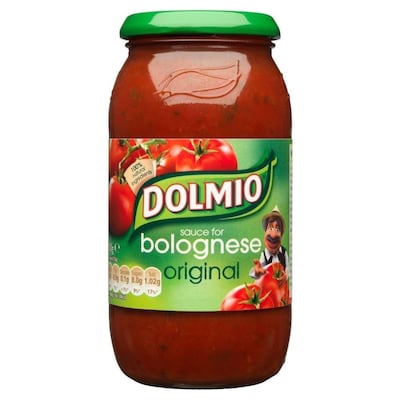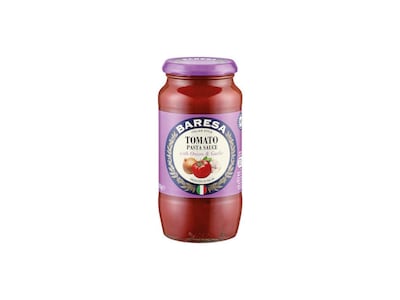When it comes to throwing a meal together in minutes, there is little handier than a ready-made pasta sauce. Cook the pasta. Warm the sauce. Mix the two together and hey presto, dinner is served.
But how does it measure up once you examine the label?
Are there secrets hiding in plain sight?
In recent weeks, we learned that Irish people like unhealthy ultra-processed food and almost half a shopping basket can be taken up with it.
What’s good to know, however, is that a simple pasta sauce does not qualify as ultra-processed.

A 350g jar of Loyd Grossman’s Tomato and Basil sauce, for example, is not very different from something you might make at home. The main ingredient is tomatoes at 61 per cent, followed by tomato puree, garlic, basil, sugar, sunflower oil, extra virgin olive oil, salt, concentrated lemon juice and black pepper. The nutrition information shows there is 4.8g of sugar per 100g, which is just over one teaspoon. But tomatoes being technically fruit are sweet, so there is unlikely to be much added sugar. It also says one serving counts as one of your five a day, ie fruit or vegetable. The label also mentions that half a jar (175g) contains “energy 449kj/107kcal, 5 per cent of an adult’s reference intake”.
Reference intakes are a form of guideline for energy (calories/kilojoules), sugar, fat, saturated fat and salt intakes. The guidelines were drawn up based on the idea that the average adult aged between 19 and 64 should eat no more than about 2,000 calories a day to stay healthy.
The other reference intakes state that your consumption of total fat should be less than 70g, saturated fat no more than 20g, carbohydrate should be at least 260g, total sugars about 90g, protein 50g and salt less than 6g per day to maintain health. These were drawn up with the average female in mind. The figure for sugars looks high because it includes all sugar, such as those found in tomatoes, not just added sugar.
So having half a jar of this pasta sauce will give you about 107kcal, which is about 5 per cent of 2,000. That’s where the 5 per cent comes from.
Reference intakes are not intended to be targets so they are different from the old measure of “recommended daily allowance”. Reference intakes are simply meant to give you a clearer picture of how much you are eating. It’s a way of benchmarking.
So, for example, the label on one pot of flavoured yoghurt shows that it has 8g saturated fat and 40 per cent of the reference intake. That’s because the reference intake for saturated fat is “no more than 20g” per day. So eat a full pot and you are 40 per cent of the way there. It might make you think twice about what else you eat that day.
It’s not a judgment on the product’s nutritional value, just an indicator as to its composition.
So it’s worth casting an eye over the figures to see if any are high.

Pasta sauces generally do well on reference intakes and ingredients, but not all are the same. Dolmio’s Original Bolognese is a little cheaper than Grossman’s and it uses cornflour as a thickener, but then that’s not too different from what one might do at home.
Aldi’s Italian Style Classic Bolognese sauce has fewer tomatoes, but also has other vegetables such as carrots and celery.
Lidl’s Tomato-based Pasta Sauce with Chilli and Garlic relies on the chilli to give it kick, but it is still a good choice.
What becomes very clear to anyone scrutinising labels is that most of the cheaper sauces have added modified maize starch, which is highly processed and adds little in the way of nutrition.

That is the case with the Cucina Sauce for Bolognese and the Baresa Tomato sauce with Onion and Garlic from Lidl. It is also the case with the Dolmio Original sauce for Bolognese on sale in Lidl.
The cheaper sauces often cost just about 65c for 500g, while the others cost about €1.50 for 350g. Pasta sauce is not an expensive product to begin with so paying less really looks like a false economy.
There are so many warnings around food lately, it is important to realise that not all processed food is the same.
FOOD LABELS SERIES
1) Being a successful shopper
2) Bread
3) Milk
4) Cereal
5) Rashers
6) Yoghurt
7) Soup
8) Hummus











